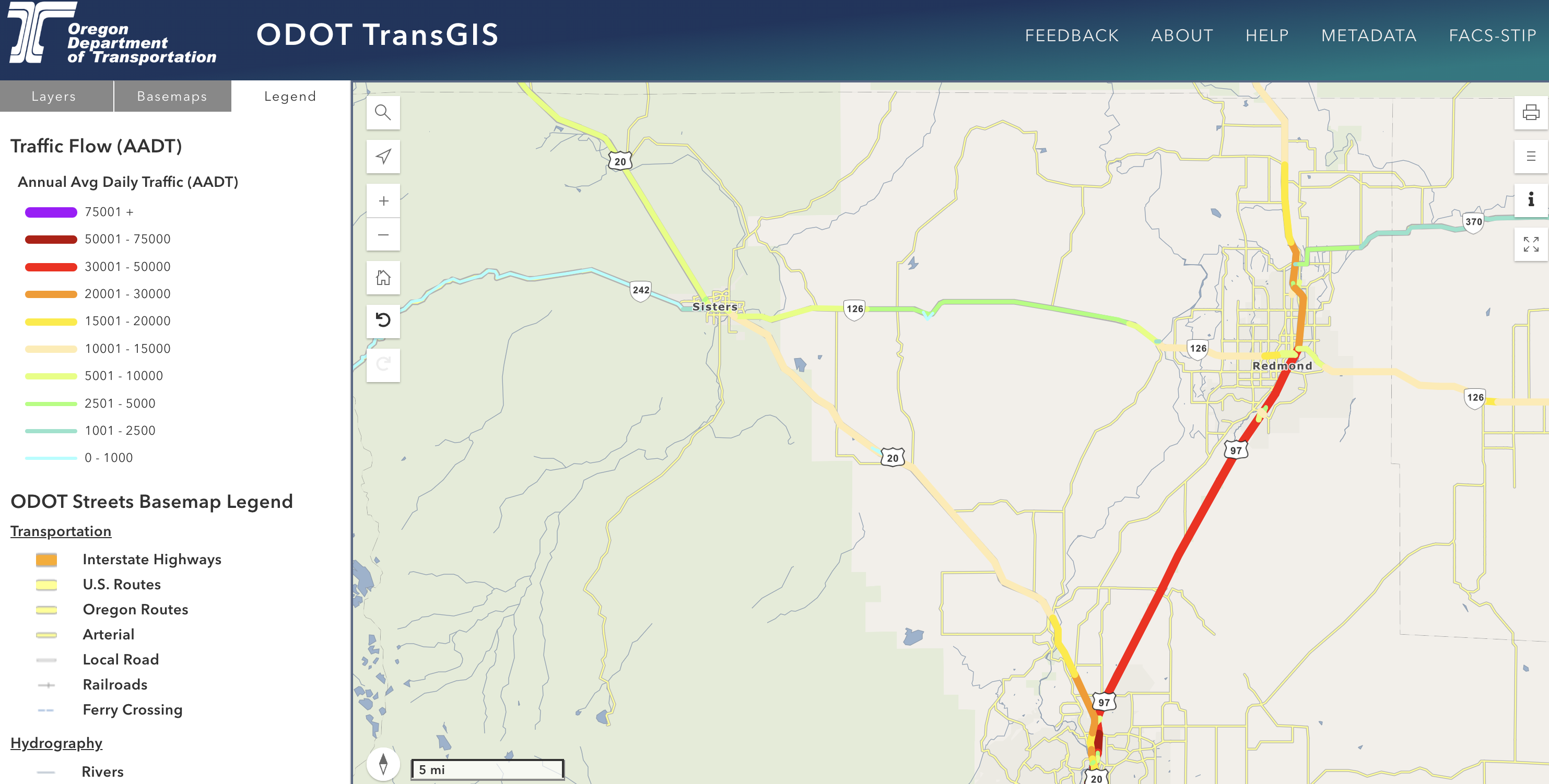In some of our route guides, we have begun to use Annual Average Daily Traffic (AADT) as a simple measurement of how busy a road is. It is the total vehicle traffic along a segment of a road for a year divided by 365 days.
The AADT is an approximation for the amount of traffic flow at one point in one day – a daily flow rate. It does not give us actuals, traffic density, or speed. Thus, it does not take into consideration time of day, day of the week or seasonality. Still, we think that as a metric it can be more useful than no metric at all in evaluating a route.
High-volume roadways are considered those with an AADT of 50,000 or more. Low-volume roads are considered those with an AADT of 400 or less. These categorizations vary by state and country, and as such are only a guideline.
As an illustration, consider a road with an AADT of 400, a low-volume road. A low-volume road will have most of its traffic during a daytime window of 12 hours. Thus, 400 / 12 gives 33 cars passing by a given point each hour. Or as a rider, this means roughly 16 cars will pass you and 16 cars will approach you over the next hour on the given road. That is, roughly every 2 minutes you will have a car interaction.
We are piloting the use of AADT metrics on some Oregon routes and welcome your feedback.
To Find AADT for Oregon
For Oregon, the information collected by the Oregon Department of Transportation (ODOT) is publicly available and easy to access via ODOT TransGIS.
In the screenshot below we are zoomed in on a segment of Highway 20 between Sisters and Bend.

To Access the Data
- In the left pane expand ‘Traffic Data.’
- Check Annual Average Daily Traffic for State and Non-State roads.
- Click Apply on the bottom left.
- Select the ‘i’ on the header menu to Identify Features.
- Click on the desired map feature.

 Behind every route is scouting, mapping, storytelling, and a whole lot of pedal power.
Behind every route is scouting, mapping, storytelling, and a whole lot of pedal power.